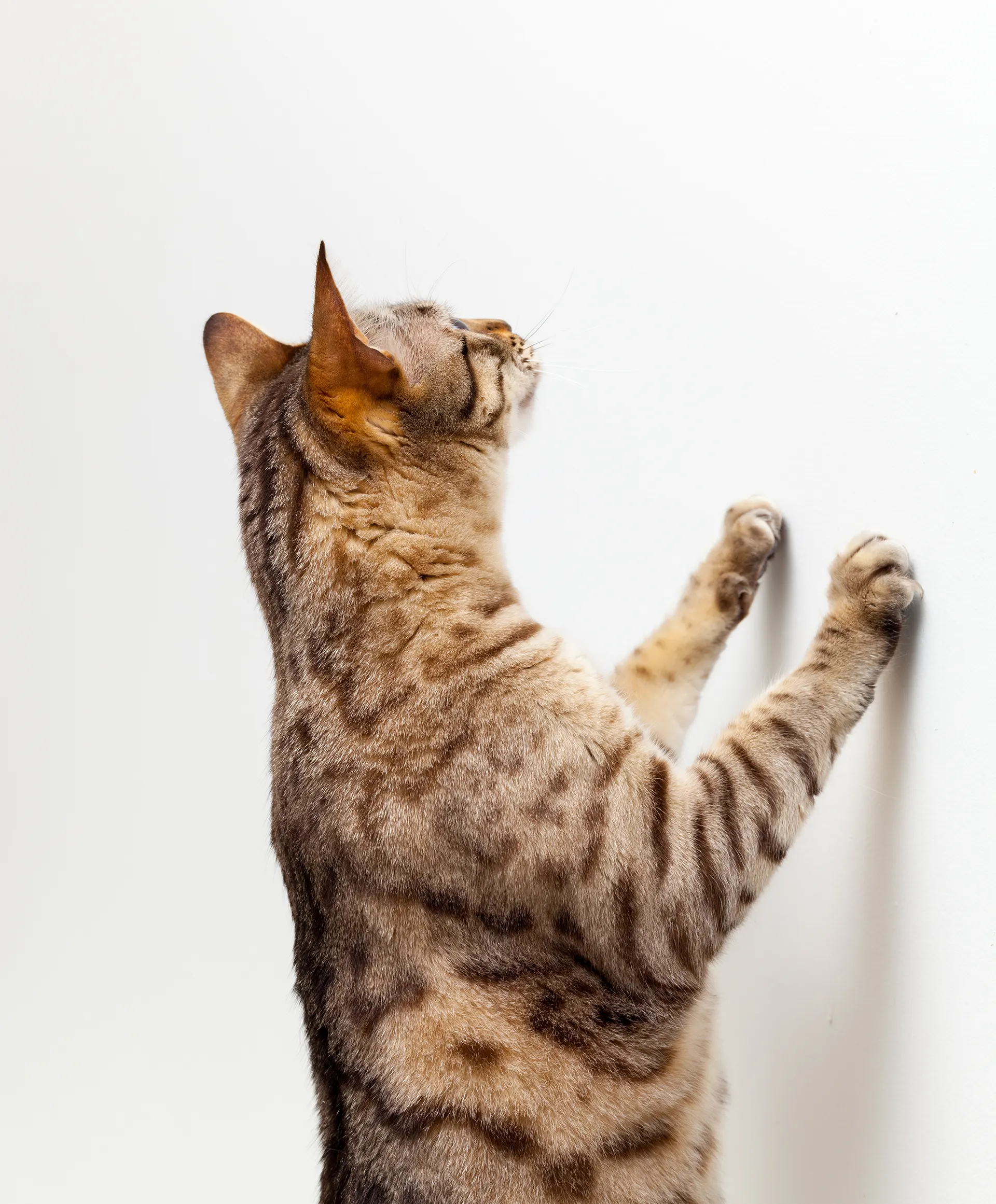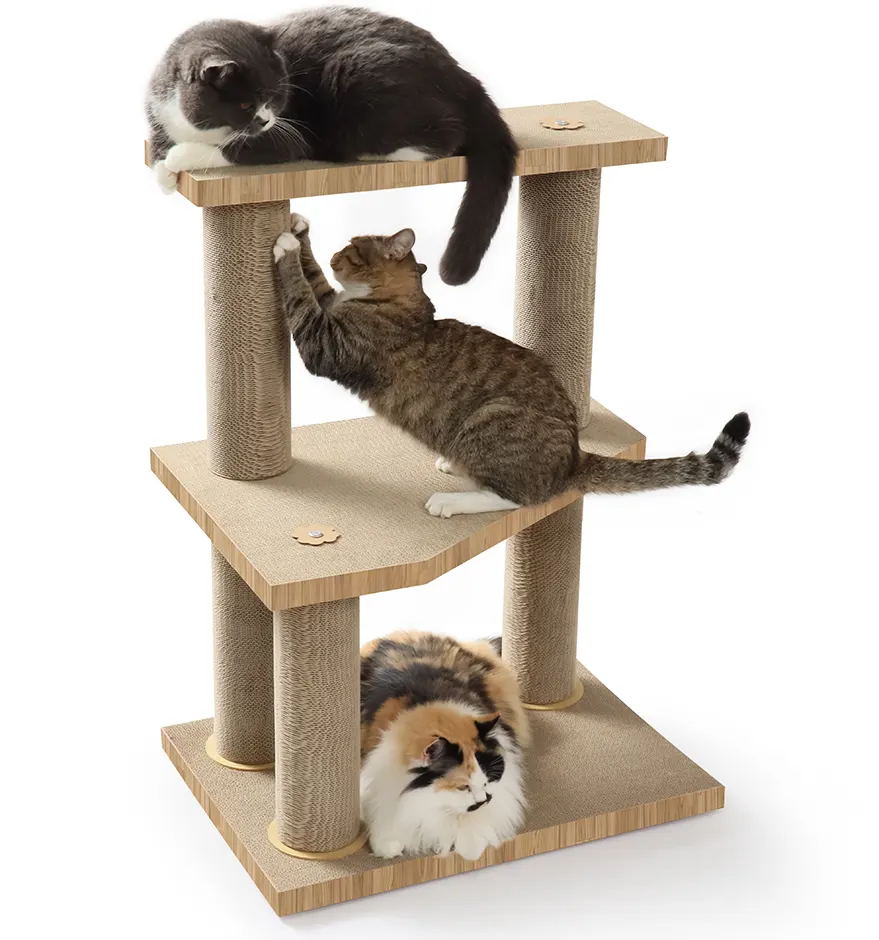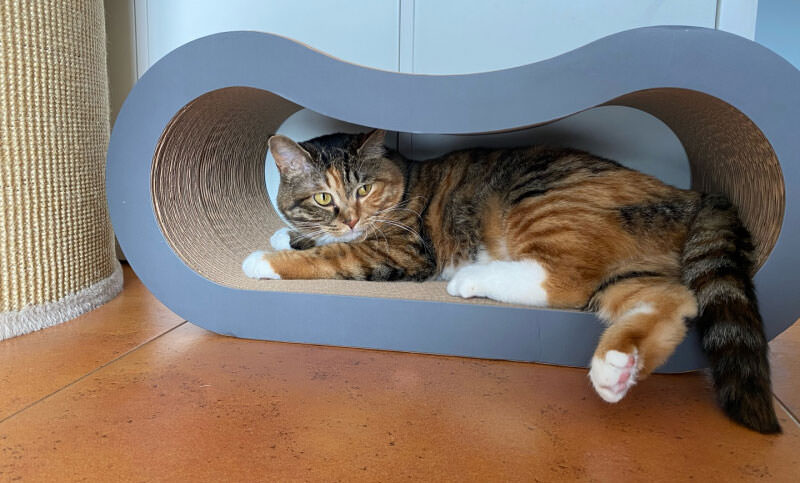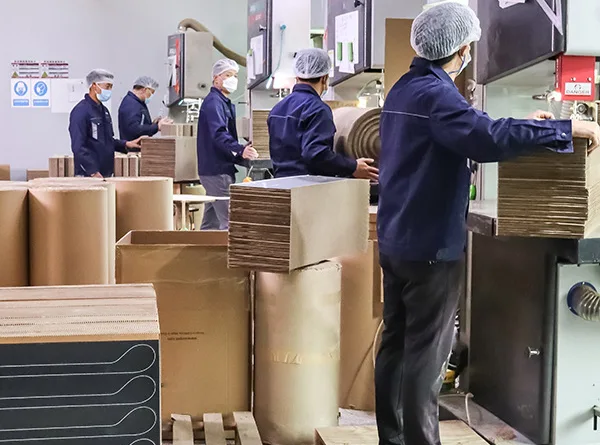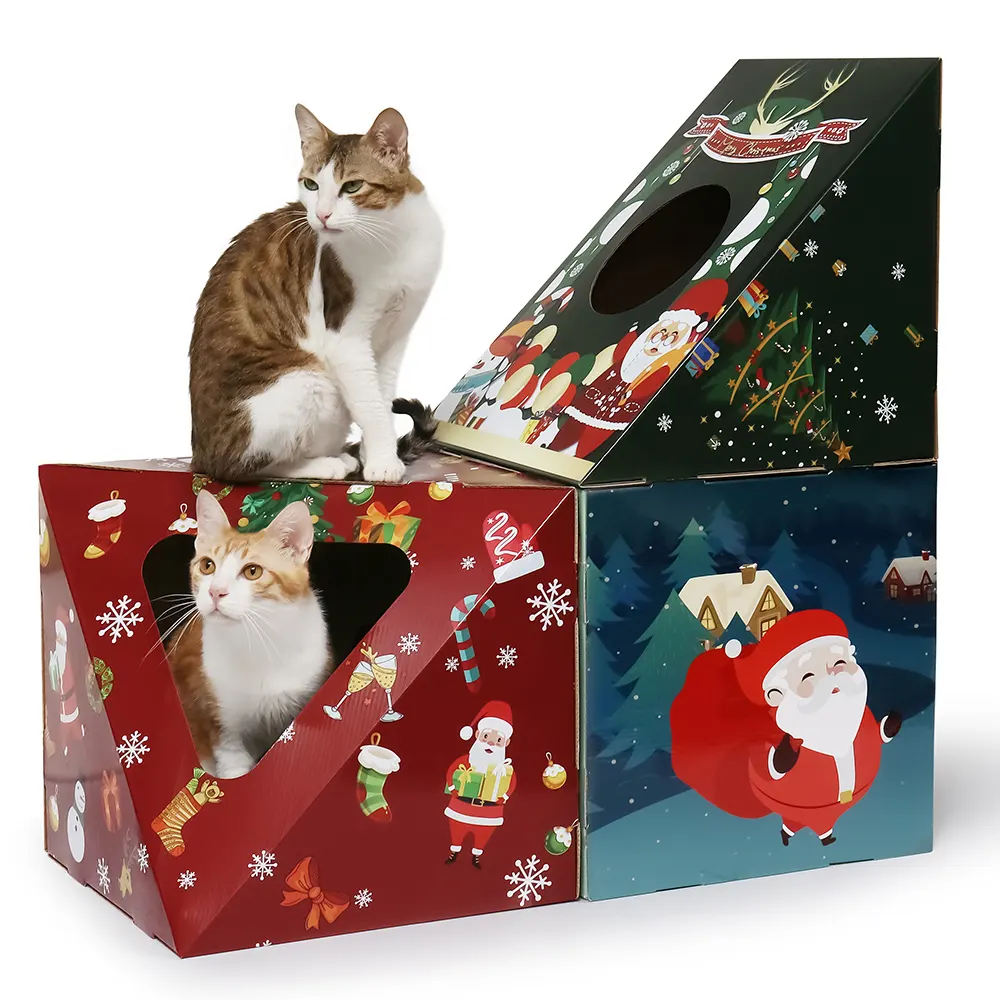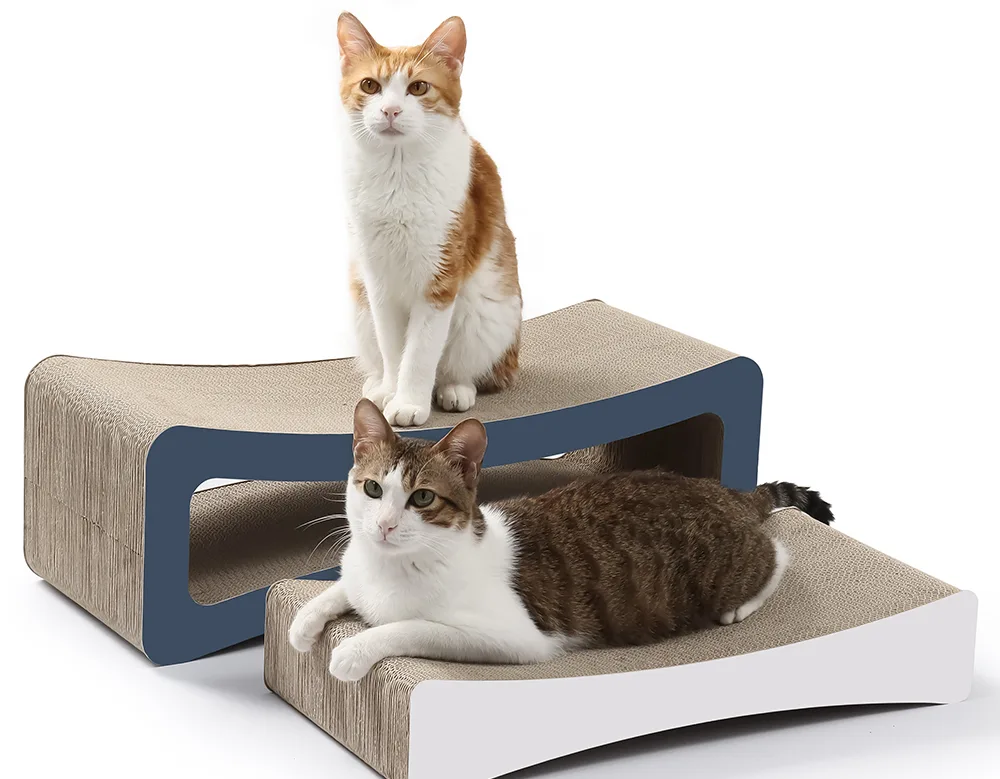Top 6 Materials for Cat Scratchers
Cats are known for their playful and curious nature, and scratching is an essential part of their behavior. Scratching helps cats keep their claws healthy, mark their territory, and relieve stress. As a result, having a good-quality cat scratcher is crucial for any cat owner. However, not all cat scratchers are created equal, and the material of the scratcher plays a significant role in its effectiveness and durability. In this guide, we'll explore the top 6 materials for cat scratchers to help you choose the best one for your feline friend.
1. Sisal
Sisal is one of the most popular materials for cat scratchers, and for good reason. Derived from the Agave sisalana plant, sisal fibers are tough and durable, making them perfect for a scratcher. Sisal can be used in two forms for scratchers: sisal rope and sisal fabric.
- Sisal Rope: Commonly wrapped around posts, sisal rope offers a textured surface that cats find satisfying to scratch. Its natural, rough feel mimics the texture of tree bark, which cats naturally love to scratch.
- Sisal Fabric: Unlike the rope, sisal fabric is a flat, woven material that provides a consistent surface for scratching. It tends to last longer than sisal rope because it does not unravel or wear down as quickly.
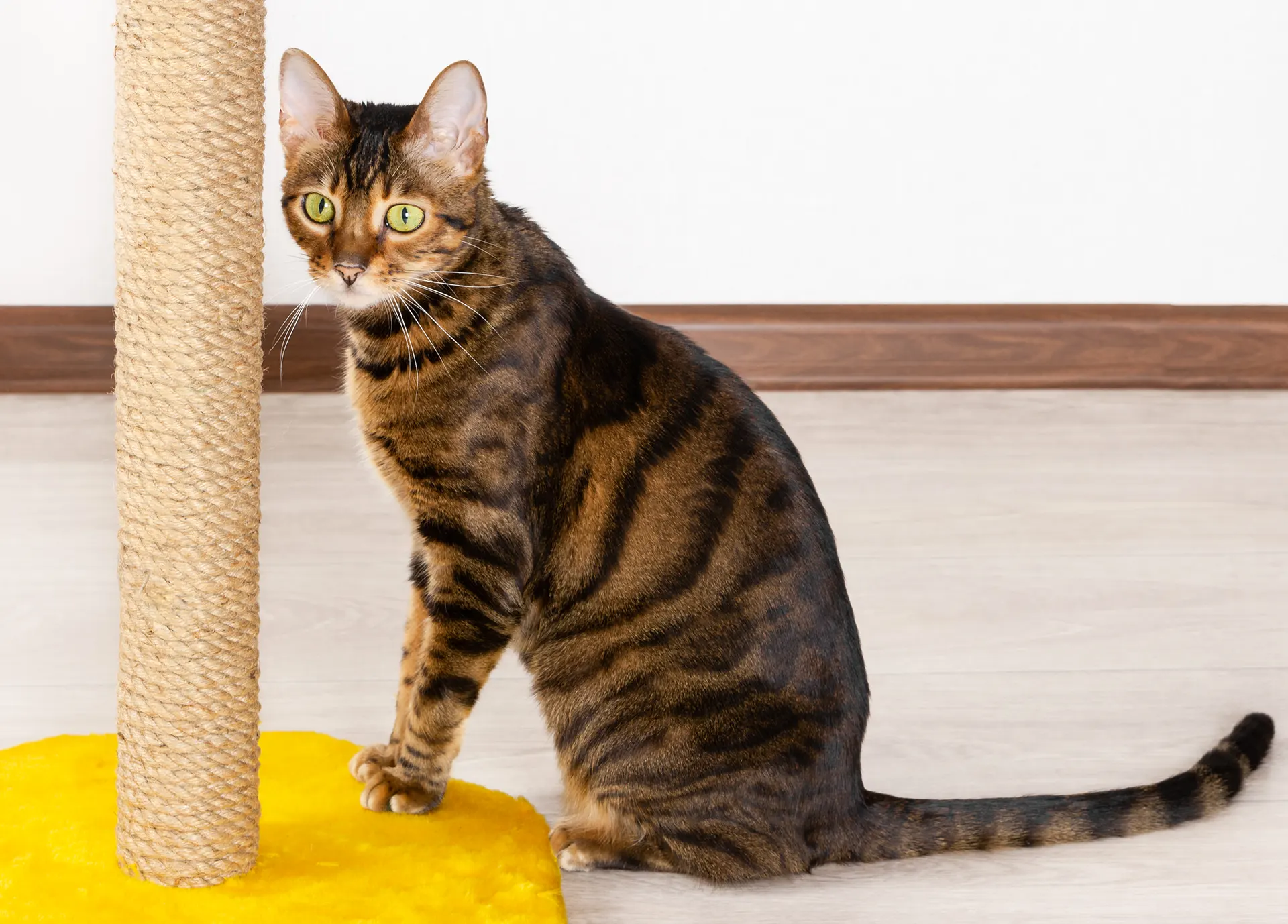
Pros of Sisal
- Durable: Sisal can withstand a lot of scratching without showing significant signs of wear, making it a long-lasting option.
- Natural and Safe: Being a natural fiber, sisal is non-toxic and safe for cats.
- Encourages Scratching: The rough texture of sisal is appealing to cats and encourages them to scratch on the scratcher rather than on furniture.
Cons of Sisal
- Can be Messy: Over time, sisal can shed fibers, creating a mess around the scratcher.
- Not Aesthetic for Some: The appearance of sisal rope or fabric may not blend well with all home decors.
2. Cardboard
Cardboard scratchers are incredibly popular due to their affordability and effectiveness. These scratchers are typically made from corrugated cardboard, which provides a satisfying scratching surface for cats.

Pros of Cardboard
- Affordable: Cardboard scratchers are often cheaper than other materials, making them a cost-effective option for cat owners.
- Eco-Friendly: Most cardboard scratchers are made from recycled materials, making them a more environmentally friendly option.
- Variety of Shapes and Sizes: Cardboard scratchers come in various shapes and sizes, including flat pads, curved surfaces, and even interactive designs, providing versatility and fun for cats.
Cons of Cardboard
- Less Durable: Cardboard scratchers tend to wear out faster than other materials, especially with heavy use.
- Can Be Messy: As cats scratch away, bits of cardboard can scatter around, requiring regular clean-up.
3. Carpet
Carpet-covered scratchers are another common choice. The idea is to offer a similar texture to what cats might encounter in a home environment, particularly if they have a habit of scratching the carpet.
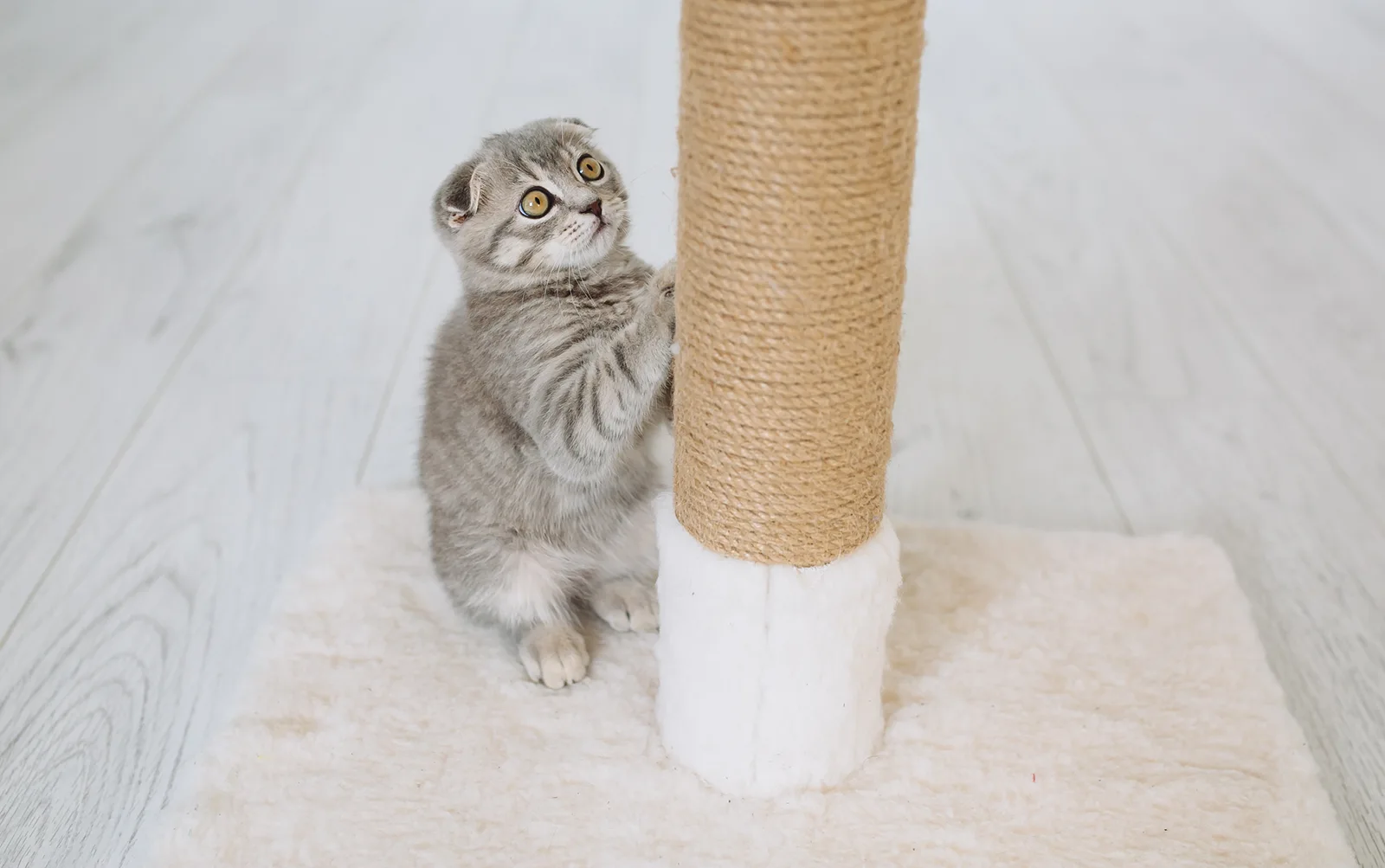
Pros of Carpet
- Soft and Comfortable: The plush nature of the carpet can be comfortable for cats to scratch and lie on.
- Durable Options Available: Depending on the type of carpet used, some can be quite durable and withstand heavy scratching.
- Dual Functionality: Carpet-covered scratchers often serve a dual purpose as a scratching post and a cozy resting spot for cats.
Cons of Carpet
- Might Encourage Bad Habits: Cats might start scratching other carpeted areas in the house, thinking it is acceptable.
- Not as Durable as Sisal: Over time, carpet fibers can fray and become less appealing to cats.
- Can Hold Odors and Stains: Carpet can absorb odors and stains, requiring regular cleaning.
4. Wood
Wood is a less common but highly durable option for cat scratchers. It provides a natural scratching surface that some cats may prefer, especially those that like to scratch trees outdoors.

Pros of Wood
- Extremely Durable: Wood scratchers can last for years, even with heavy use, making them a great long-term investment.
- Natural and Safe: Wood is a natural material that is safe for cats to scratch.
- Aesthetic Appeal: Wooden scratchers can blend well with home décor, offering a more sophisticated look.
Cons of Wood
- Hard Surface: The hard surface of wood may not appeal to all cats, particularly those that prefer softer textures.
- Limited Availability: Wooden scratchers are less common on the market, providing fewer options for cat owners.
5. Fabric
Fabric scratchers offer a unique alternative, combining various materials for scratching surfaces. They can include soft fabrics, fleece, or even denim, providing a different texture for cats.

Pros of Fabric
- Variety of Textures: Fabric scratchers can appeal to different scratching preferences, making them versatile.
- Comfort: Soft fabrics provide a cozy surface for scratching and lounging.
- Stylish Options: Fabric scratchers often come in visually appealing designs that can enhance your home decor.
Cons of Fabric
- Durability: Fabric may wear out quickly, especially with vigorous scratching.
- Cleaning: Depending on the fabric, cleaning can be challenging, and some may not be machine washable.
6. Paper
Paper scratchers are an eco-friendly option gaining popularity among cat owners. Made from recycled paper, these scratchers are lightweight and often come in various shapes and sizes.
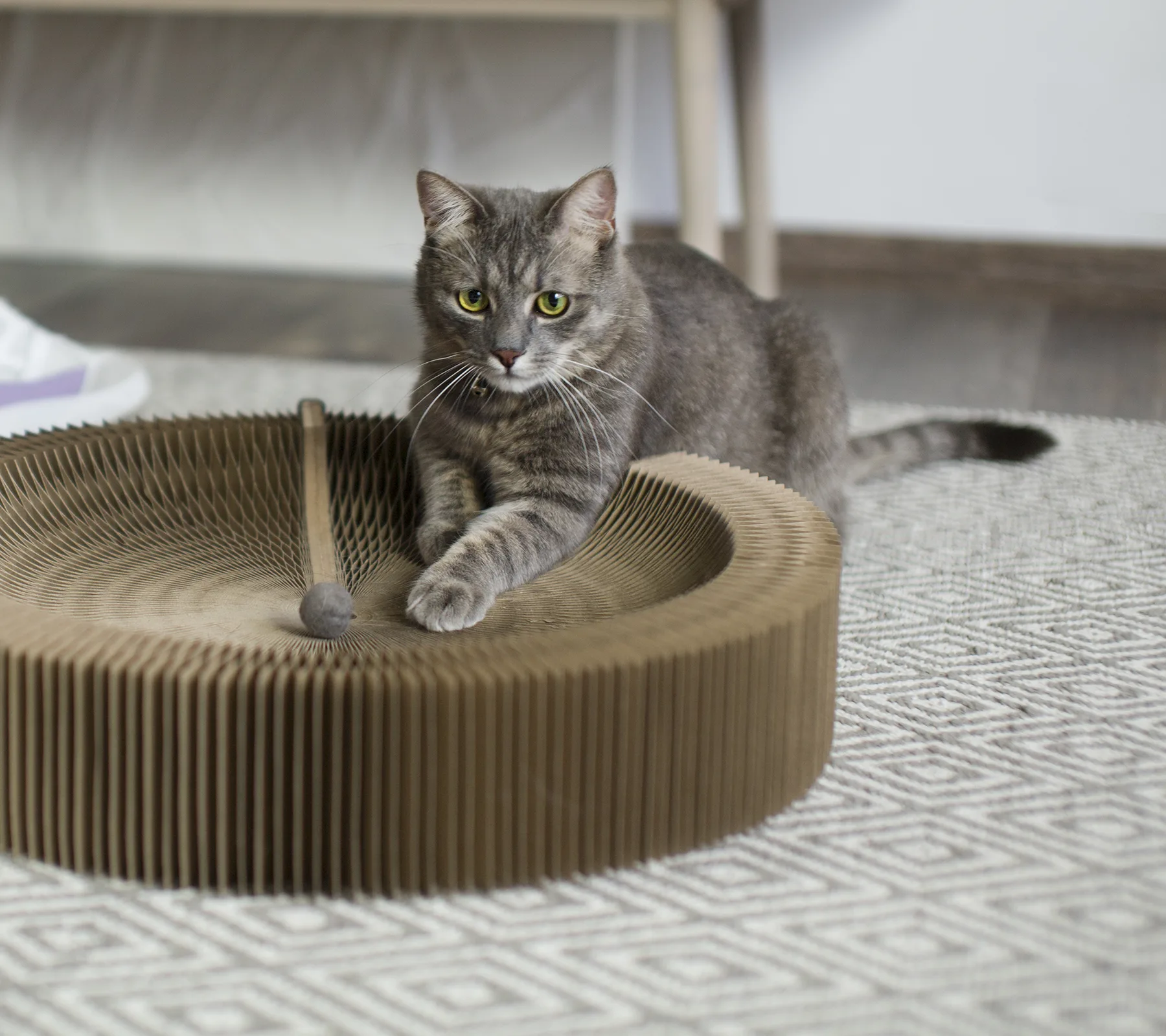
Pros of Paper
- Eco-Friendly: Since they are made from recycled materials, paper scratchers are a sustainable choice.
- Lightweight: They are easy to move and reposition, making it simple to find the best spot for your cat.
- Affordable: Paper scratchers are typically inexpensive and can be replaced easily.
Cons of Paper
- Limited Durability: Paper scratchers may not last as long as other materials, especially with heavy use.
- Messy: Like cardboard, they can shed bits of material, creating a mess in your home.
Conclusion
Choosing the right material for your cat's scratcher depends on several factors, including your cat's preferences, the scratcher's location, and your budget. Sisal and cardboard remain the most popular choices due to their effectiveness and affordability, but other materials like wood, jute, and various fabrics can offer unique benefits. Ultimately, the best scratcher is one that meets your cat's needs and fits seamlessly into your home.
When selecting a scratcher, observe your cat's scratching habits and preferences. Whether they love the rough texture of sisal, the soft feel of carpet, or the natural appeal of wood, there's a perfect scratcher material out there for every feline. By providing a high-quality scratcher, you're not only protecting your furniture but also promoting a healthy and happy lifestyle for your beloved pet.
By choosing the right material and maintaining the scratcher well, you ensure that your feline friend remains happy, healthy, and entertained, while also keeping your home scratch-free.

